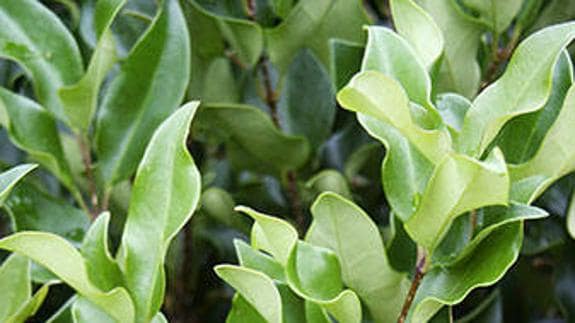

Sections
Highlight

PPLL
Tuesday, 11 July 2017, 15:47
Compartir
Ligustrum japonicum Recurvifolium, or wavy leaf privet, is a hardy shrub or small tree. It is an evergreen with glossy, dark-green leaves which have wavy edges. The curled leaves are slightly lighter underneath and give the effect of movement, a fact appreciated by flower arrangers.
In addition to the attractive foliage there are the showy panicles of white, lilac-like flowers that appear from spring until midsummer. The delicate sprays are scented and will continue to appear until the weather gets too hot.
Privets have a reputation for seeding themselves freely but the black berries of Recurvifolium, are not eaten by birds and therefore are not spread so easily.
Once established, L. japonicum Curvifolium is drought-resistant. It will tolerate being close to the sea and is cold-hardy. It is not fussy about soil type either, although it will not survive in waterlogged soil. It can withstand extreme heat although it will prefer a semi-shaded position to full sun.
Although most commonly used for hedging (it can be cut back hard in winter and can be sculpted to any size or shape), wavy leaf privet is also used to create a fast-growing screen, a specimen plant and will also thrive grown in a container. Removing the lower growth when it is about a metre tall will encourage it to form a multi-trunked tree.
Light pruning can be carried out in the summer and it may be advisable to remove the black berries if there are children or dogs around as they are poisonous. Any heavy pruning should be carried out in the winter. Winter is also the best time to transplant it if necessary.
All privets are easily propagated from cuttings from softwood in the spring or hardwood in the winter. Softwood cuttings usually root quicker, sometimes ready to be transplanted by early summer whereas hard wood cuttings take longer and are best with a heel of the main stem attached.
Publicidad
Publicidad
Publicidad
Publicidad
Reporta un error en esta noticia
Necesitas ser suscriptor para poder votar.